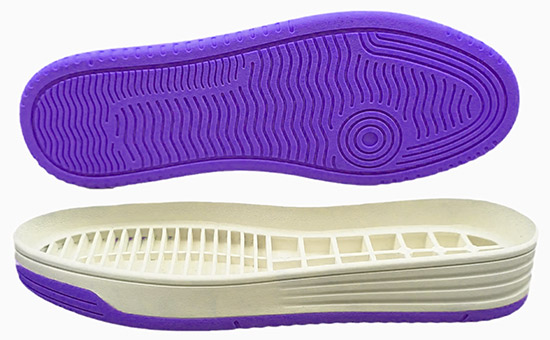
Natural latex recycled rubber has the basic performance characteristics of natural rubber, and can be used alone or in combination with natural rubber, styrene-butadiene rubber to produce various sponge rubber products, effectively reducing raw material costs. When latex recycled rubber produces sponge foam rubber products, the vulcanization system design is crucial. How to design a vulcanization system for sponge foam rubber products containing latex recycled rubber, and what issues need to be paid attention to?
The principle of designing the vulcanization system of natural recycled rubber sponge rubber is to match the vulcanization rate of the rubber material with the decomposition rate of the blowing agent.
1. 6 problems that are easy to occur when the vulcanization system of latex recycled rubber sponge foam rubber products is not reasonable
(1) Foaming precedes vulcanization, and the sponge structure is easy to become open, with uneven bubbles and rough skin; (2) Vulcanization precedes foaming, and the sponge structure is easy to become obliterated, and the surface is dense; (3) Insufficient vulcanization, uneven foaming, poor physical and mechanical properties of the compound, and easy deformation; (4) Excessive vulcanization, reduced sponge foaming rate, surface hardening or softening; (5) Low temperature long-term and low-speed vulcanization, thin sponge skin, and generally many openings; (6) High temperature and short-term high-speed vulcanization, thick sponge skin, generally many closed pores.

2. Latex recycled rubber sponge foam rubber products vulcanization system vulcanization system vulcanizing agent selection skills
When latex recycled rubber, natural rubber/latex recycled rubber and rubber are used to produce sponge foam rubber products, sulfur is the most commonly used vulcanizing agent, and the general dosage is controlled at 1.5-2.5 parts. Most latex recycled rubber foam products choose sulfur-accelerator system, especially sponge foam products with medium and low hardness and high elasticity.
When using latex recycled rubber to produce rubber products with special requirements for heat resistance and aging resistance, sulfur-free/low-sulfur vulcanization systems can be used, such as a small amount of sulfur combination accelerator, or directly vulcanized with DCP.

3. Latex recycled rubber sponge foam rubber products vulcanization system accelerator selection skills
When choosing accelerators for latex recycled rubber sponge foam rubber products, it is recommended to avoid using or use overspeed accelerators such as NOBS, which can easily lead to early vulcanization of the rubber material and the bubble pores cannot be fully expanded.
Thiazole accelerators are commonly used as main accelerators for latex regenerated rubber foaming products, such as accelerators M and DM, which have medium activity, good compatibility with latex regenerated rubber and natural rubber, and have a gentle vulcanization curve. Guanidine accelerators such as D and autumn ram accelerators such as TMTD were used as auxiliary accelerators for latex regeneration rubber and sponge glue, and accelerator D could increase the vulcanization temperature and prolong the scorching time in synergy with M/DM. The accelerator TMTD accelerates the vulcanization rate and balances the cross-linking needs in the later stages of foaming of natural recycled adhesives.

4. Latex recycled rubber sponge foam rubber products vulcanization system activator selection skills
When using latex recycled rubber to produce sponge foam rubber products, the rational use of active agents can not only ensure the vulcanization efficiency, but also better adjust the foaming efficiency, and the commonly used active agents are zinc oxide and stearic acid E5LYY65. The amount of zinc oxide in latex recycled rubber foaming products is generally 5-8 parts, which can not only activate the vulcanization system, but also promote the decomposition of blowing agents such as ADC and increase the foaming rate. The amount of stearic acid is controlled at 2-3 parts, and zinc soap is formed with zinc oxide to enhance the effect of active agent, improve the processing fluidity of latex regeneration adhesive material, and promote the uniform distribution of bubbles.

Latex recycled rubber has similar properties to natural rubber, lower price, better processing performance, widely used in sponge foam rubber products, vulcanization system design needs to ensure the coordination and matching of vulcanization and foaming process, when designing the vulcanization system, pay attention to the type and amount of vulcanizing agent and accelerator, the synergistic effect of active agents, and comprehensively consider the vulcanization rate, decomposition characteristics of the blowing agent and process conditions, to avoid common defects such as open/closed cell abnormalities, uneven bubbles, rough surface, insufficient elasticity and strength, etc.
Exclusive original article [commercial authorization] reprint, excerpt and excerpt in any form are prohibited without written authorization. Focus on Hongyun rubber: learn the process formula and raw material technology of producing rubber products from recycled rubber to help you reduce costs and increase profits